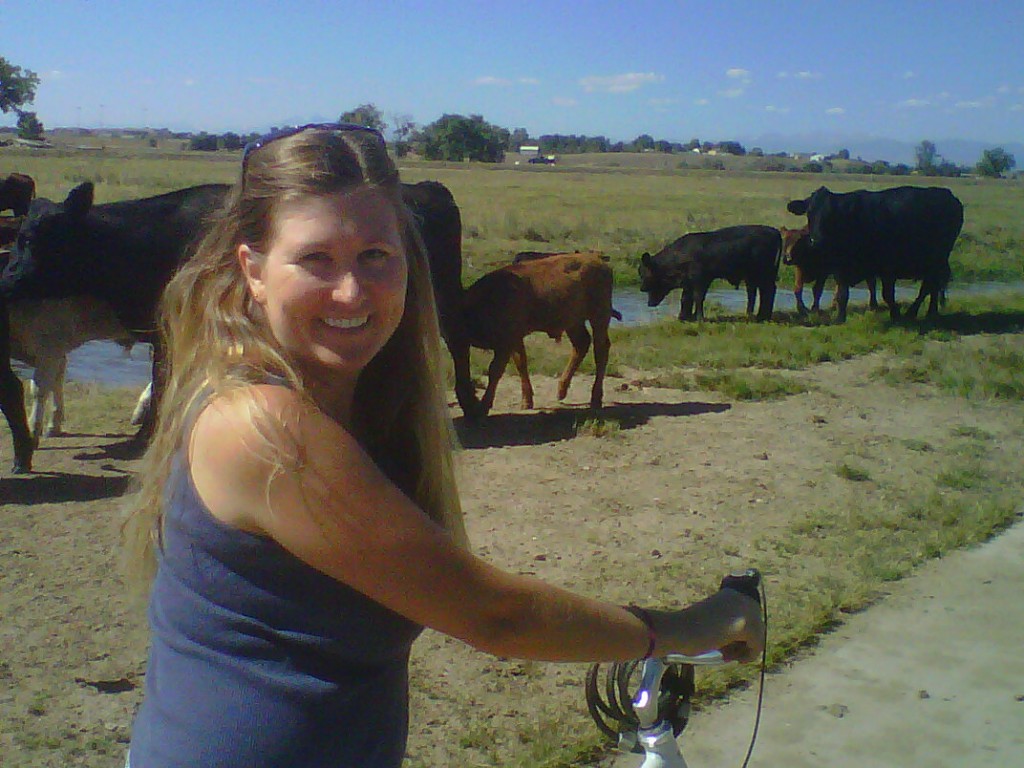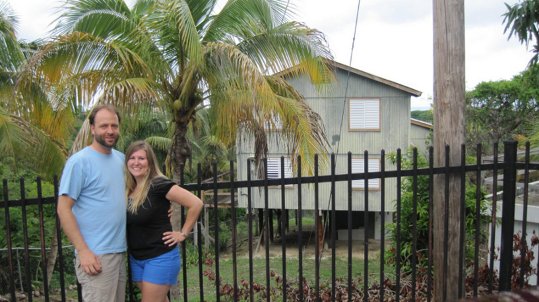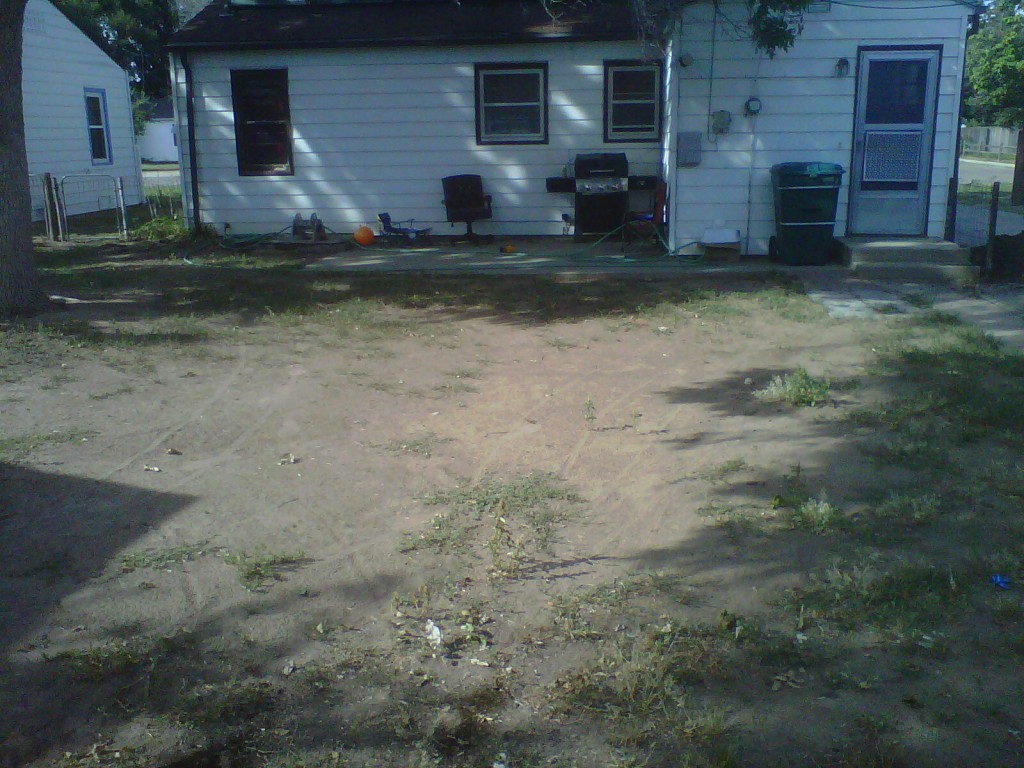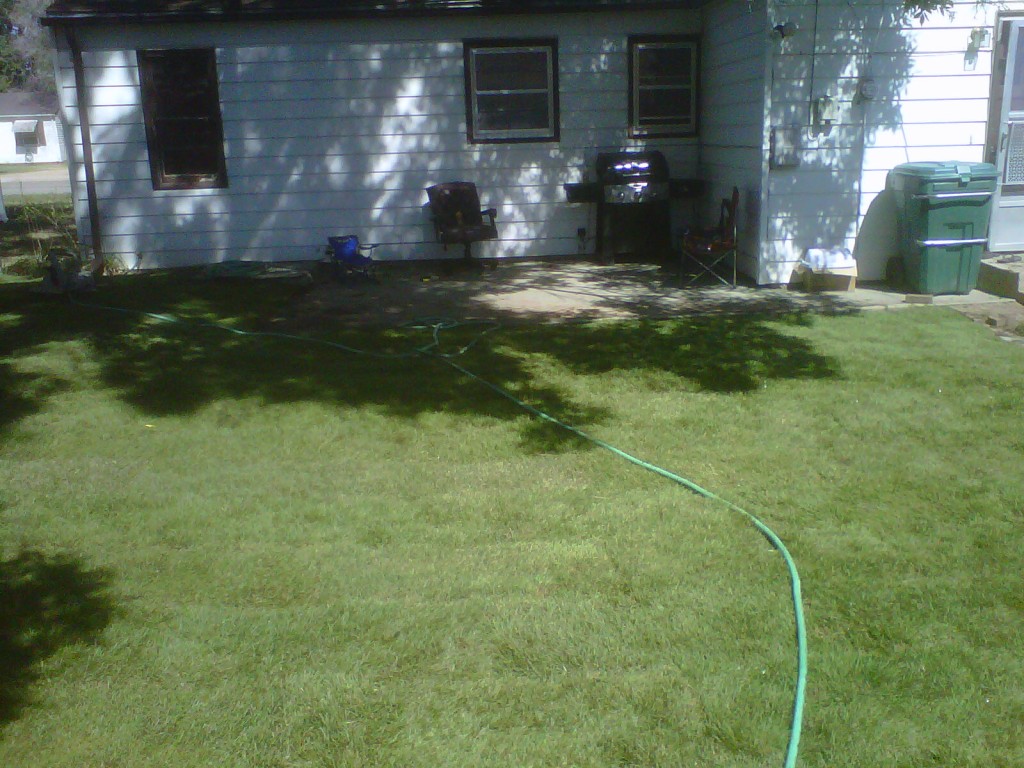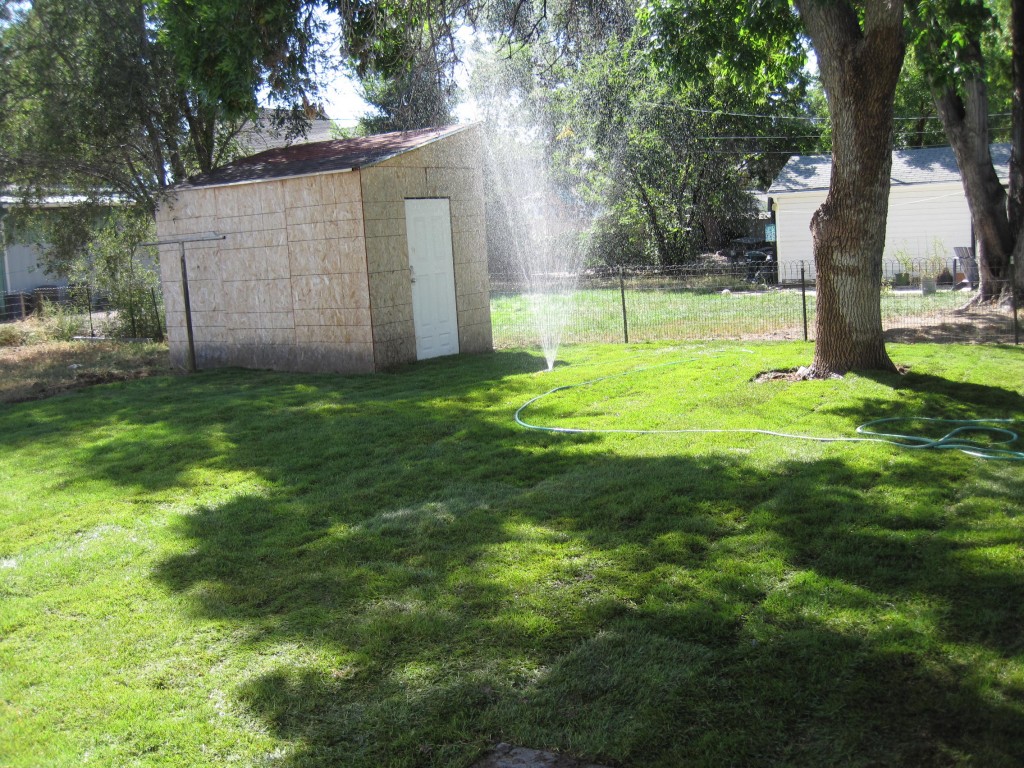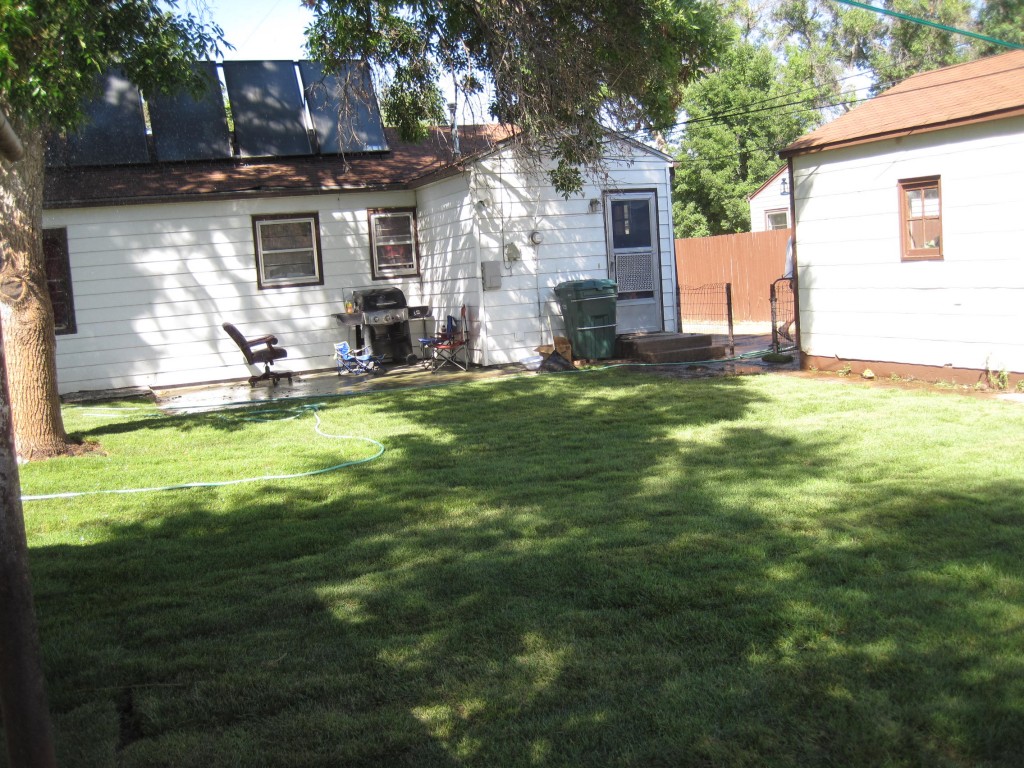This weekend the weather was great here in Colorado, so Britton and I decided to take a bike ride from our house down the Poudre River Trail for a while. At one point we stopped as there were lots of cows crossing the river. They are so cute. If cows were smaller, we would so get one! 🙂
Monthly Archives: September 2011
Easter Egger Green Eggs
We have two chickens who are called Americanas, AKA Ameraucanas, Auracanas or just Easter Eggers. One of them is Greenfoot and the other is Littlefoot. When we got Greenfoot we were excited to see green or blue eggs, but she only laid brown speckled eggs. So this last year when we got the new chicks we got another Americana, Littlefoot and were hopeful that her eggs would be a different color.
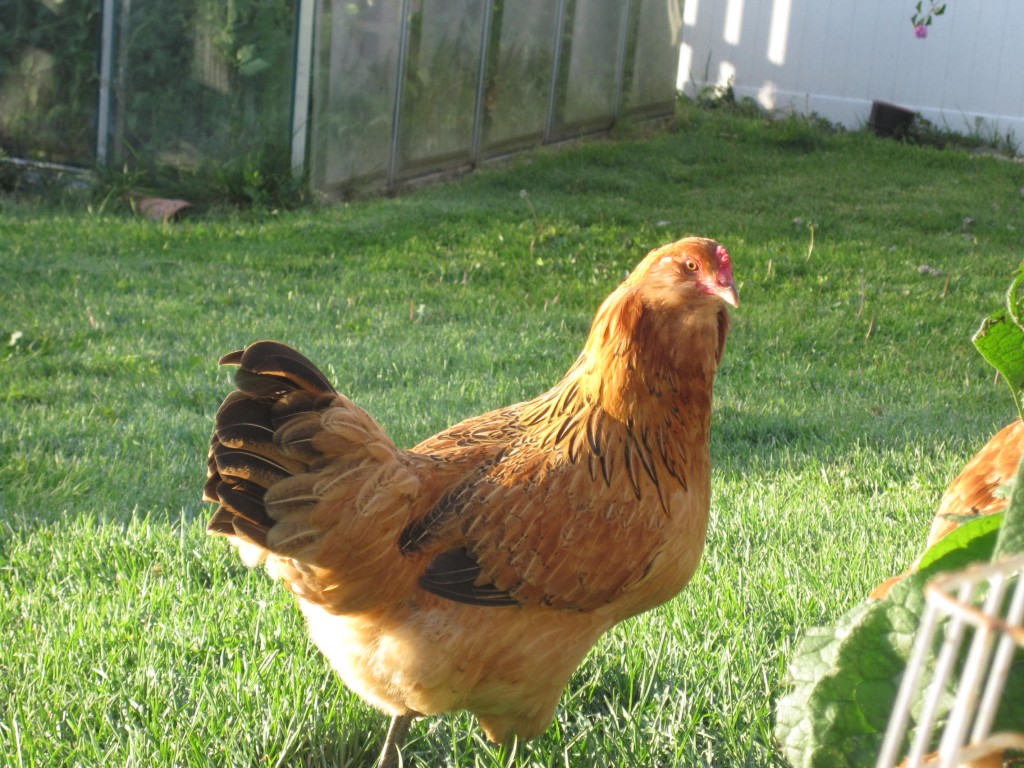
Littlefoot the green egg layer
So…one day we went out and found a very obviously green egg! They are so cool. Now you know that the Dr. Seuss story wasn’t completely made up! We CAN have green eggs and ham!
The egg shell color is determined by the breed of chicken. A brown egg or green egg is no more (or less) healthy than a white egg. What makes an egg healthier is what the chickens eat. Because white eggs are from the industry standard Leghorn (like Omeleto) they are often considered less healthy than brown eggs that are from heritage breeds – like our barred rock. But really, it’s about their diet. On the outside the shells may have a different color, but inside the color only changes if they have a more varied diet such as being on pasture eating bugs, green grasses and the occasional mouse. If you want to see the inside difference between a conventional store-bought egg and our backyard hens’ eggs, you can see it here.
Otherwise, here’s the outside cool variety of colored shells.
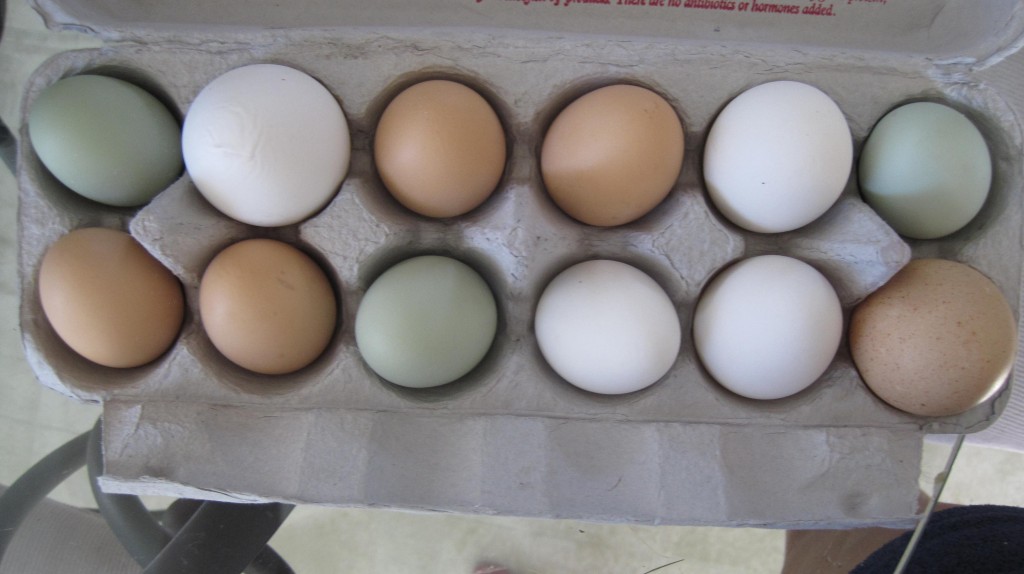
Variety Pack: carton of eggs including the green eggs and speckled eggs
Buying Property in Puerto Rico: Similarities and Differences
There are many similarities and even more differences when buying property in Puerto Rico as compared with the states. So I decided to create a list for easy comparison. Can you think of any other similarities and differences when buying in Puerto Rico?
Buying Property in Rincon, Puerto Rico
We are new homebuyers in Rincón, Puerto Rico, but we had been looking for a property in Puerto Rico for some time.
In 2008 we attempted to purchase a property -a finca- in Lares, in the central part of Puerto Rico. In 2010 we also had another contract to buy a property in San Sebastian. It is from these experiences and our current experience buying our house in Rincon that we’ve learned that buying property in Puerto Rico is not exactly what you might expect stateside. We own properties in Colorado also so we do know about that process too. In some ways buying a property in Puerto Rico is quite similar to in the states, and in others, it is very different. Here are some of those similarities and differences:
Similarities:
- Puerto Rico is part of the United States and so Federal regulations do apply to housing.
- Most banks/mortgage lenders require the same paperwork: application, appraisal, survey, etc
- You need a contract to buy/sell
- The deed/title proves you own it. In Puerto Rico you own property basically just as in the states.
- You will want to make sure the deed is clean with no liens including utilities.
- You will have a closing and they will give you the keys. It is very informal with less paperwork compared to the states
- You can work with a real estate agent or with the seller in “for sale by owner”
- Closing with “cash” instead of a mortgage is less hassle
Differences:
- Puerto Rico does it DIFFERENT. Puerto Rico has its own government and housing stimulus packages and requirements that differ
- You can’t use a mortgage lender in the states. It must be a Puerto Rican lender.
- The paperwork may be in Spanish (or it may be in English)
- There is no MLS -Multiple Listing Service. This makes it very hard to search for a property in Puerto Rico.
- Because there are so many people who sell “by owner” and because there is no MLS, you will be doing a lot of calling and setting up appointments to see houses instead of doing them all at once
- Puerto Rico’s title laws do NOT guarantee a spouse (especially a woman) will inherit the property if the other spouse (the man) dies so this must be considered or explicitly stated in a will or other legal document
- Notaries in Puerto Rico MUST be a lawyer. Basically you will need a lawyer at some point in the process if you are planning to buy a house in PR
- The negotiation is generally not written out. In the states all offers need to be written. In PR, in our experience, only the contract and final paperwork was written out
- Many houses, especially outside of San Juan or out of a subdivision are “non-conforming” in one way or another. This may make it difficult to buy a house with a mortgage. In our attempt to purchase the Lares property they found that the access road to the house was non-conforming as it went over a river. Other things could be if the septic tank is not accessible or even if the house is made out of wood like ours in Rincon. There are “non-conforming” houses in the states as well, but there seem to be a lot more in PR. This also makes it hard to get an accurate appraisal as there are often no “comparables”
- There is a preference for concrete houses over wood for a few reasons (insurance, mortgage companies)
- People buy houses with cash a lot more often than in the states. This is often to avoid a lot of this red-tape.
- Prices may be ridiculously high or low. Because of the lack of true value appraisals, it’s sort of whatever goes.
- Property tax is very low and sometimes nothing at all in Puerto Rico, especially for people with only one property that they live in (as opposed to a vacation home).
- A note on buying in Rincón specifically compared with some other areas: Houses can be a lot more expensive in Rincón. Puntas, specifically even more so. Anything west of the 2 is more expensive than east of the 2. This is mainly because of the influx of stateside people willing to spend more (supply and demand).
These are just a few examples of differences in buying a house in Puerto Rico as compared with the states. As for us, the property deal in Lares fell through for a few of these reasons. We were attempting to purchase it with a mortgage, but it not only had problems because it was non-conforming but also because the title was not filed correctly. With the Rincon property we determined that it would be best to get a personal loan from the states (a 401(k) loan) instead of getting a mortgage to avoid a lot of the hassle and since we knew we might be given some grief over one of the buildings being wooden. We did get a lawyer because 1) you have to for the paperwork and 2) to make sure everything was titled correctly.
Overall, buying a property in Puerto Rico can be somewhat of a challenge if you’re used to the way things are in the states, but it is really not too bad and in some ways it’s actually better/easier. In any case, we are so happy we did and we can’t wait to get back to our home in paradise. If you’d like to check out our property, here are some pictures and videos.
* This post was first written in collaboration with Rincon Life and Rincon Vacations.
Insta-Lawn
At one of our rentals, the backyard was just pure dirt. We had been wanting to put in a yard but thought we would wait until about a year after since we had done so much work to it. Well, this was the one that was abandoned prior to the end of the lease term, so when we got new tenants in, we let them know we would like to put in a grass yard in the back, but only if they would be willing to water it (since they pay water). After they settled into the routine of living in the house, they got back to us that they would like the lawn and would be willing to water extra for the first month or so.
So we got to work. We ordered the compost to amend the soil and tried to line up a rototiller from my brother who does landscaping. Then we ordered the sod. Sod is much more expensive than grass seed, but it creates an insta-lawn. One moment it is dirt, and the next it’s a yard. Kind of like putting down carpet or something. So Britton worked from home on Friday and once his work day was over he was over shoveling compost into the yard.
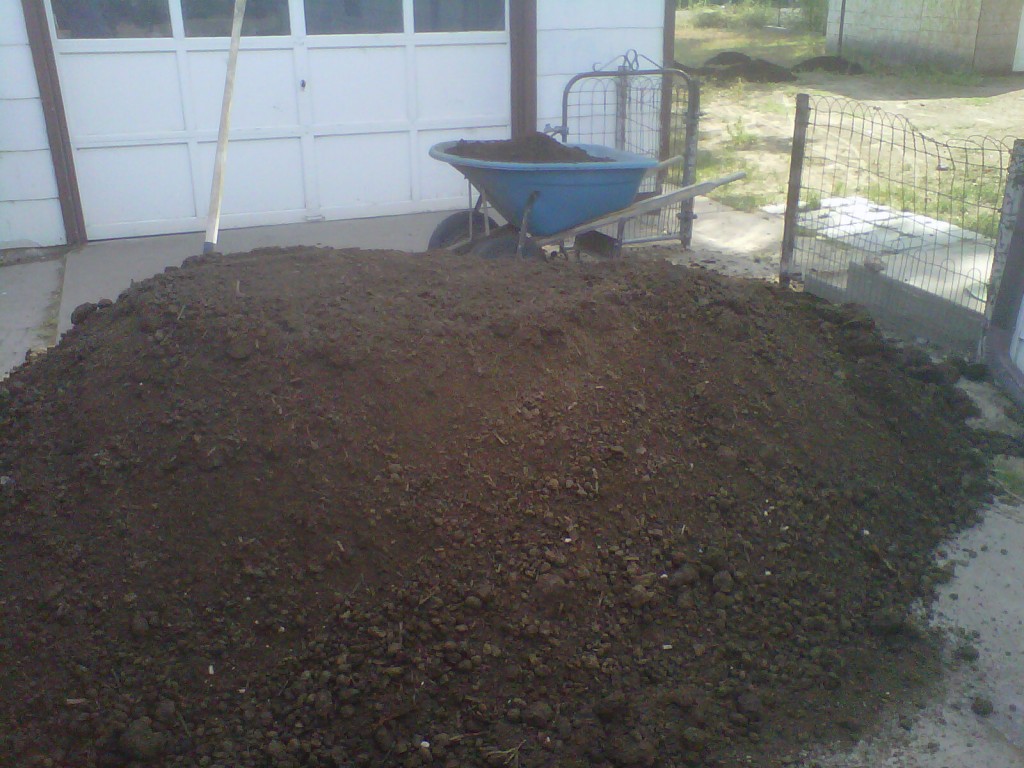
A big pile of composted cow poo
Once the compost was transfered to the yard, it was time to till it in. That’s where the roto-tiller came in. We hauled it over but once we figured out how to start it, the tires locked up and it wouldn’t move at all. That meant: hand shoveling to till it. So the three of us -Britton, me and Martin our tenant were all out there until dark tilling the backyard.
Then Saturday morning Britton worked by himself installing the sod. When he came home he was worn out! But I came over to see the outcome and it looks great!
Here are some before and after pictures:
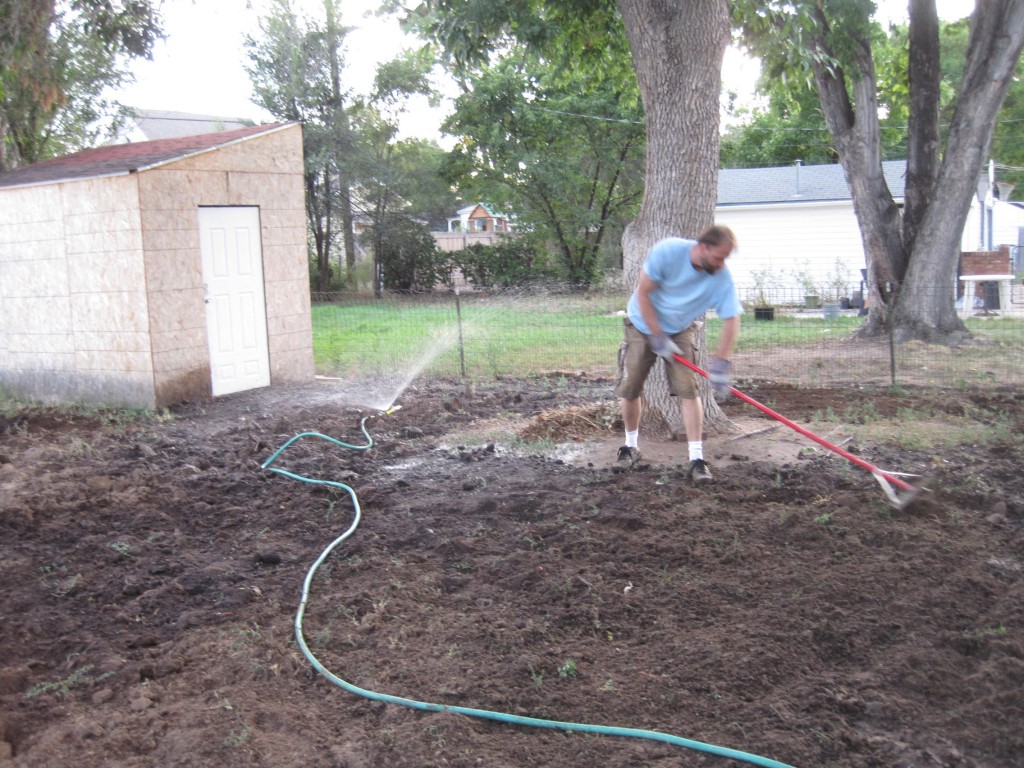
Before: Britton is raking the tilled compost to flatten it before laying the sod
We just hope that our tenants keep it well watered for the first week/month. At least we put it down in September when the weather is not quite as intense. The tenants seemed very happy with the results as did we, which is great for everyone!

